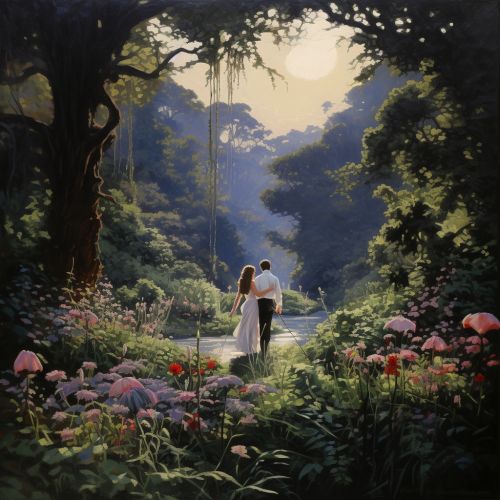Romanticism
Origins
Romanticism was an artistic, literary, musical, and intellectual movement that originated in Europe towards the end of the 18th century, and in most areas was at its peak in the approximate period from 1800 to 1850. It was partly a reaction to the Industrial Revolution, the aristocratic social and political norms of the Age of Enlightenment, and the scientific rationalization of nature—all components of modernity. It was embodied most strongly in the visual arts, music, and literature, but had a major impact on historiography, education, and the natural sciences. It had a significant and complex effect on politics, and while for much of the Romantic period it was associated with liberalism and radicalism, its long-term effect on the growth of nationalism was perhaps more significant.
Characteristics
The movement emphasized intense emotion as an authentic source of aesthetic experience, placing new emphasis on such emotions as apprehension, horror and terror, and awe—especially that experienced in confronting the new aesthetic categories of the sublime and beauty of nature. It elevated folk art and ancient custom to something noble, but also spontaneity as a desirable characteristic (as in the musical impromptu). In contrast to the Rationalism and Classicism of the Enlightenment, Romanticism revived medievalism and elements of art and narrative perceived as authentically medieval in an attempt to escape population growth, early urban sprawl, and industrialism.


Romantic Literature
In literature, Romanticism found recurrent themes in the evocation or criticism of the past, the cult of "sensibility" with its emphasis on women and children, the isolation of the artist or narrator, and respect for nature. Furthermore, several romantic authors, such as Edgar Allan Poe and Nathaniel Hawthorne, based their writings on the supernatural/occult and human psychology. Romanticism tended to regard satire as something unworthy of serious attention, a prejudice still influential today.
Romantic Music
An earlier definition comes from Charles Rosen's 1976 book 'The Romantic Generation'. The author and musicologist traces the concept of Romanticism to a period of "revolution" in the late eighteenth century, arguing that it is, above all, a musical style in which an author can express his or her subjective feelings and emotions. In the world of music, Romanticism is often associated with solo piano music, opera, symphonies, and more complex forms of music such as concertos.
Romantic Art
In the visual arts, Romanticism first showed itself in landscape painting, where from as early as the 1760s British artists began to turn to wilder landscapes and storms, and Gothic architecture, even if they had to make them up. In Germany, the Romantic movement was the dominant artistic, literary, and philosophical movement from the late 18th to the mid-19th century. Romanticism was characterized by its emphasis on emotion and individualism as well as glorification of all the past and nature, preferring the medieval rather than the classical.
Influence and Legacy
The Romantic movement has had a lasting impact on the development of Western culture. Its influence can be seen in a variety of areas, from the arts to the sciences. It has shaped our perceptions of the world around us, influencing our understanding of nature, human emotion, and the power of the imagination. Romanticism has also played a key role in the development of national identities, with its emphasis on emotion and individualism helping to shape the way we view ourselves and our place in the world.
